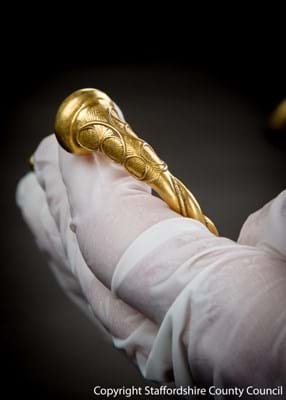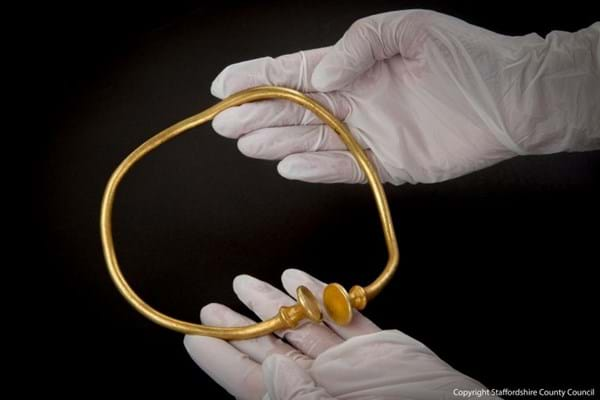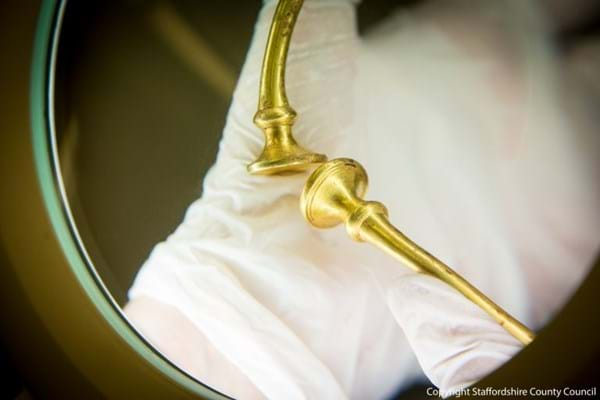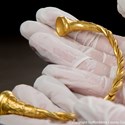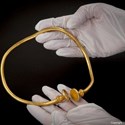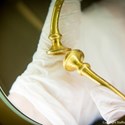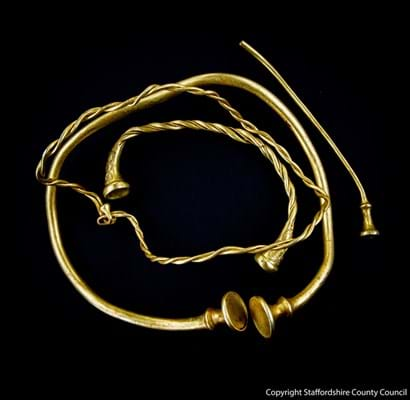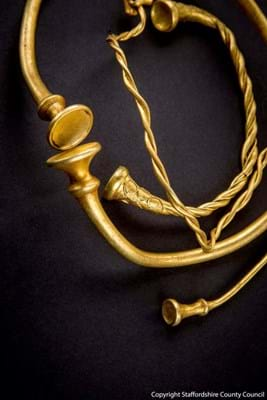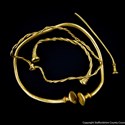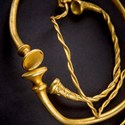The collection, comprising four torcs (distinctive twisted neck ornaments) and a bracelet, could date back to 400BC. They were found on farmland in Staffordshire last December by two metal detectorists, Mark Hambleton and Joe Kania, who handed them over to the Portable Antiquities Scheme at Birmingham Museums which manages the voluntary recording of finds.
The collection, which has been named the ‘Leekfrith Iron Age Torcs’, is thought to have been made in Continental Europe, perhaps in France or Germany.
The two detectorists found first one torc and then the other four items.
“We have found the odd Victorian coin, but mostly it has just been junk”, said Kania, “so I couldn’t believe it when I picked out this mud-covered item and on cleaning it off, I thought, this might actually be gold.”
The site has since been investigated by archaeologists who say it is a complete find with no evidence of any other pieces on the land.
The torcs have not yet been valued but, now that the find has officially been declared treasure by the coroner, they will go to a committee for valuation.
Hambleton and Kania, who had permission from the landowners, the Heath family, to search on the land, will split any proceeds from the sale of the find with the landowners.


